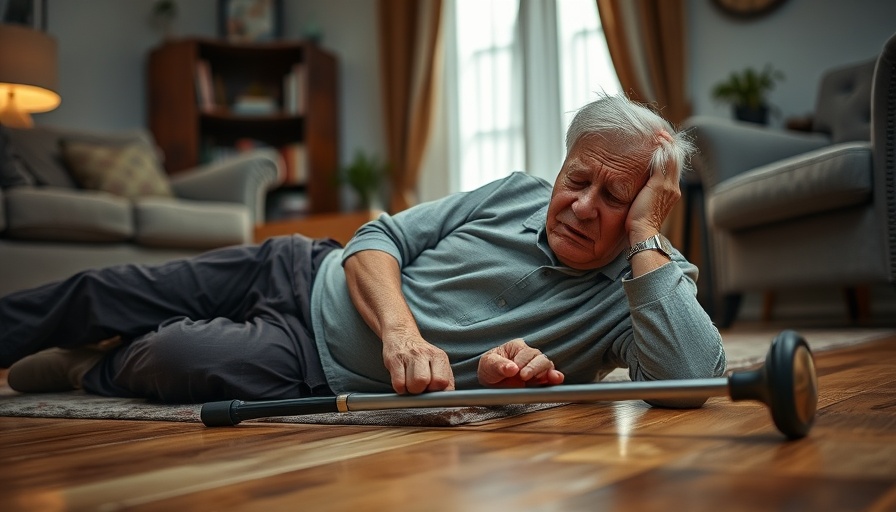
Understanding the Gravity of Fall Risks in Older Adults
As the population ages, falls have emerged as a significant threat to older adults' safety and well-being. Projections indicate that by 2030, older adults will make up a substantial portion of the American population, amplifying concerns related to injuries from falls. Recent studies show that one in four seniors experiences a fall each year. This alarming statistic not only highlights the urgent need for effective fall prevention strategies but also underscores the importance of empowering older adults to reclaim their stability and independence.
Creating a Safe Environment: Fall-Proofing Your Home
The first line of defense against falls is ensuring a safe home environment. Key modifications can include:
- Eliminating Hazards: Remove tripping hazards like loose rugs and clutter. Ensure that all walkways are clear.
- Enhancing Lighting: Dim lighting can hinder vision, making falls more likely. Install brighter bulbs and consider motion-sensor lights in hallways and staircases.
- Handrails and Grab Bars: Install handrails on stairways and grab bars in bathrooms to provide stability in critical areas.
By addressing these common hazards, older adults can reduce their risk of falling significantly.
Strength and Balance Exercises: The Foundation of Stability
Physical activity plays a crucial role in preventing falls by improving strength and balance. Here are some effective exercises for seniors:
- Chair Yoga: A gentle way to increase flexibility and balance, making it easier to perform daily tasks.
- Tai Chi: Known for its slow, controlled movements, Tai Chi improves coordination and muscle strength.
- Walking: Daily walks not only enhance physical fitness but can also serve as a social activity when done in groups.
Incorporating these activities into routine can be beneficial for both physical and mental well-being.
Medication Management: A Vital Step Towards Safety
While medications can provide significant health benefits, they can also pose risks. Older adults are often prescribed drugs that may lead to dizziness or drowsiness—factors that contribute to falls.
It is essential for seniors to regularly consult with their healthcare providers regarding the medications they take. This dialogue can ensure that potential side effects are managed and medication interactions are minimized, fostering safer experiences.
The Importance of Regular Health Screenings
Age-related changes in vision and hearing can greatly influence the risk of falling. Regular screenings are imperative to ensure that any impairments are addressed promptly. The Mayo Clinic indicates that conditions like osteoporosis, which weakens bones, can lead to severe injuries in the event of a fall. This makes vitamin D and calcium supplementation vital for maintaining bone health, alongside regular medical assessments for bone density.
Community Engagement: A Stronger Front Against Falls
Beyond individual responsibilities, community resources play an integral role in promoting safety and wellness for older adults. Engaging with local health and wellness centers can provide access to:
- Health Workshops: Educational sessions that teach fall prevention techniques and other health-related topics.
- Support Groups: Connecting with peers can foster both emotional support and shared strategies for staying active safely.
- Exercise Classes: Many communities offer tailored fitness programs that focus on strength and balance for older adults.
By leveraging these resources, seniors can enhance their quality of life while feeling secure in their environment.
Empower Yourself with Knowledge
Understanding that falls result from a combination of factors—environmental, physical, and medical—is crucial for developing effective prevention strategies. Simple steps can lead to a more proactive approach to aging safely. For individuals in San Antonio and beyond, embracing a lifestyle centered around health and wellness can pave the way for a vibrant, independent future.
Equipped with this knowledge, readers are encouraged to take action and evaluate their home environments, exercise regimens, and overall health management practices. The road to enhanced safety begins with a commitment to awareness and adaptation.
 Add Element
Add Element  Add Row
Add Row 




Write A Comment